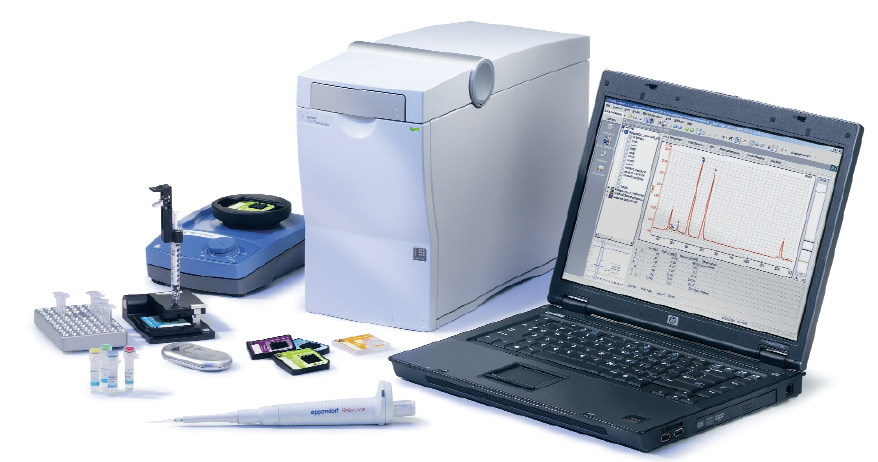 Tenders and Job Opportunities
Tenders and Job Opportunities Tenders and contracts
Tenders and contracts Advice of pre-information
Advice of pre-information ENGLISH
ENGLISH Pages
Pages
Pages
11th Advanced Phytoplankton Course - 4-24 October 2015
The Course was held at Stazione Zoologica Anton Dohrn, Naples, Italy, 4-24 October 2015.
The Course was organized by the Stazione Zoologica in cooperation with the Department of Biology, University of Copenhagen, Denmark, and the IOC Science and Communication Centre on Harmful Algae.
The aim of APC 11 is to increase and update the expertise of the students in the taxonomy and specific identification of diatoms, dinoflagellates, coccolithophores and other phytoflagellates, with emphasis on light microscopy and integrating molecular data, electron microscopy and new approaches to the study of microalgae.
Projects
Coastal Ecosystem Functioning in a changing Antarctic ocean (CEFA)
Environmental Monitoring in Relation to the Connection of the Campania Islands to the National Power Network. Torre Annunziata – Capri Leg
Hydraulic reclamation of Miseno lake and reopening, settlement and protection of the mouth of the Fusaro lake - Project "Environmental rehabilitation and improvement of the campi Flegrei lakes"
Instrumentation
UV-Visible spectophotometer Agilent 8453
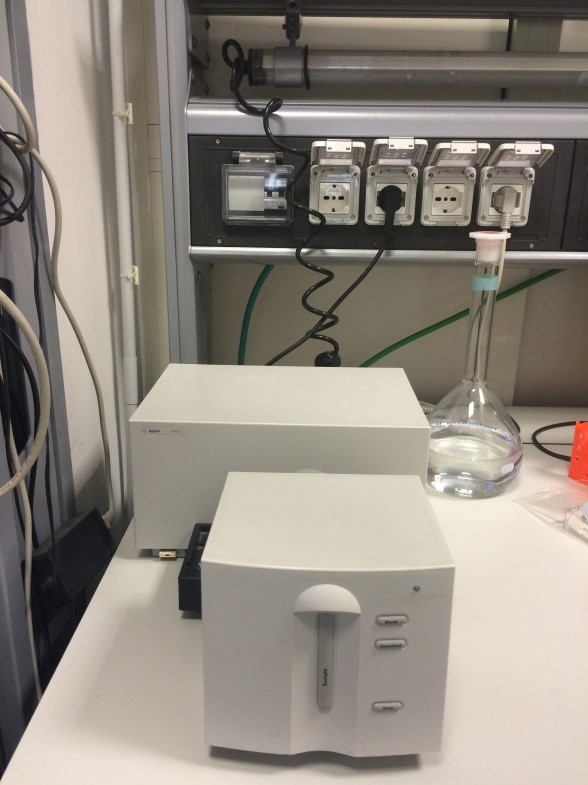 |
The instrument measures the light absorption of mixtures or UV - visible standards in order to obtain the exact concentration of the compound of interest |
SHIMADZU RF-5301PC spectrofluorometer
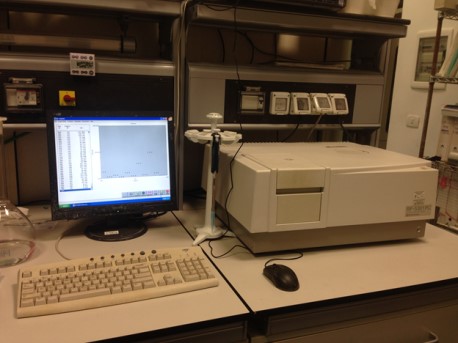 |
It is used for the quantitative and / or qualitative analysis of fluorescent substances. Taking advantage of the high sensitivity, it allows the quantitative determination of substances present in concentrations too low for spectrophotometric analyses |
HPLC Agilent 1100 series
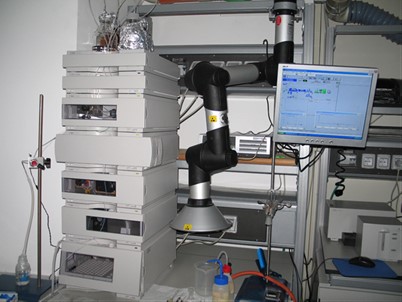 |
The HPLC is an analytical instrument utilized to separate and to purify the components of a sample mixture, to identify and to quantify each component |
Thermo Scientific FlashEA 1112 Elemental Analyzer
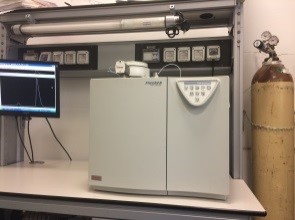 |
The Thermo Scientific FlashEA 1112 analyzer delivers rapid and precise determinations of Nitrogen and Carbon on solids |
Flow Sys Systea Autoanalyzer
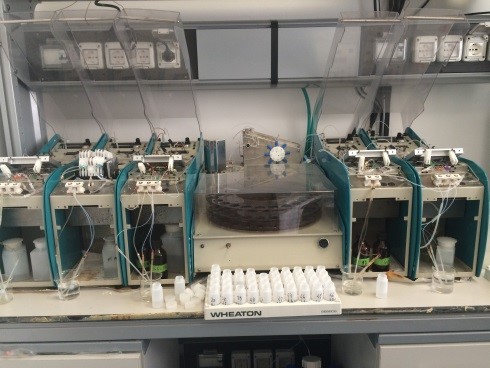 |
It allows the simultaneous analysis of nutrients (nitrate, nitrite, ammonia, phosphate and silicate). Moreover , analyses of total and dissolved organic Nitrogen and Phosphorus can be carried out |
PhytoPam Walz
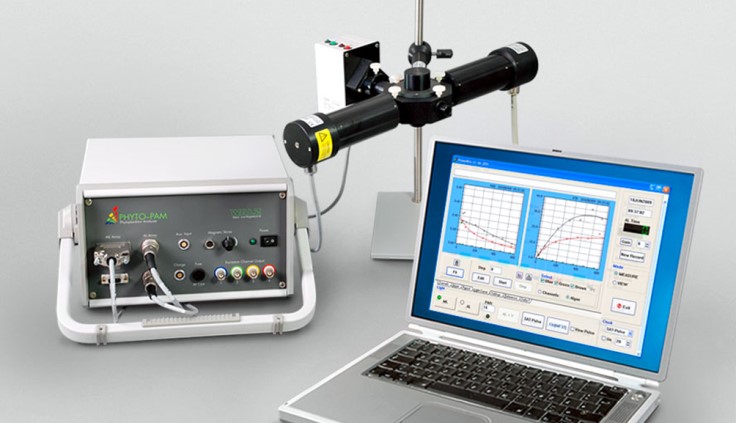 |
PHYTO-PAM can be used to assess the photosynthetic performance and light-adaptation status of different types of phytoplankton |
Remote Operating Vehicle - ROV POLLUX III
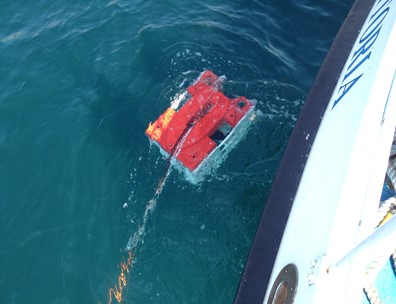 |
The instrument is used for visual exploration of the seabed through a controlled cable edge which guides the underwater vehicle and can operate up to a maximum depth of 300m |
Independent Oceanographic Platform Remote Programmable and Operable- Wave Glider - SV3 074
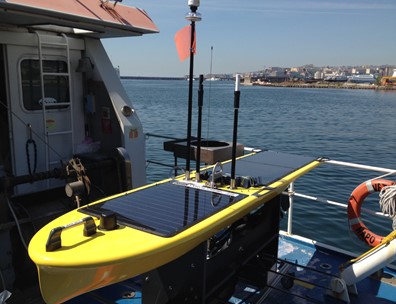 |
The instrument is an oceanographic platform with a self-motive, autonomous and programmable detection operable remotely. It is equipped with oceanographic and meteorological sensors |
VMP 250 (TurboVMP) Vertical Turbulence Profiler
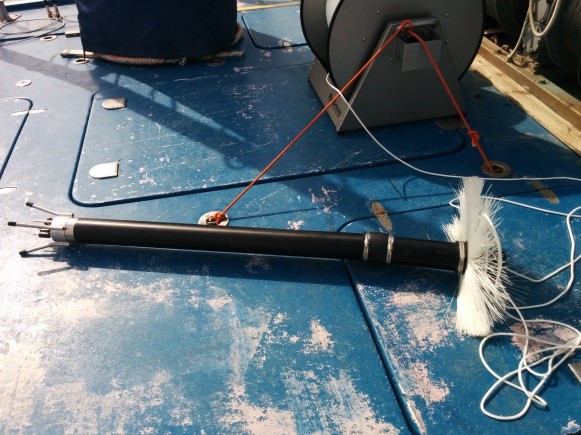 |
It is a versatile profiler for the measurement of micro-scale turbulence |
Services
Analyses of environmental and biological variables |
|
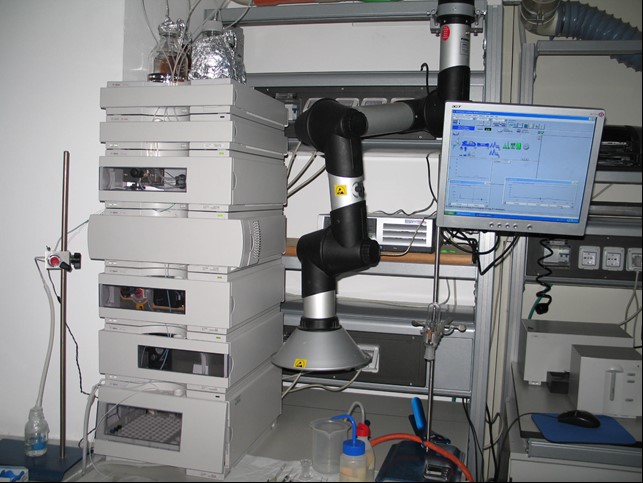 |
Data processing of the automatic profilers, chemical and instrumental analyses of the main environmental and biological variables |
Coastal monitoring of chemical, physical and biological parameters |
|
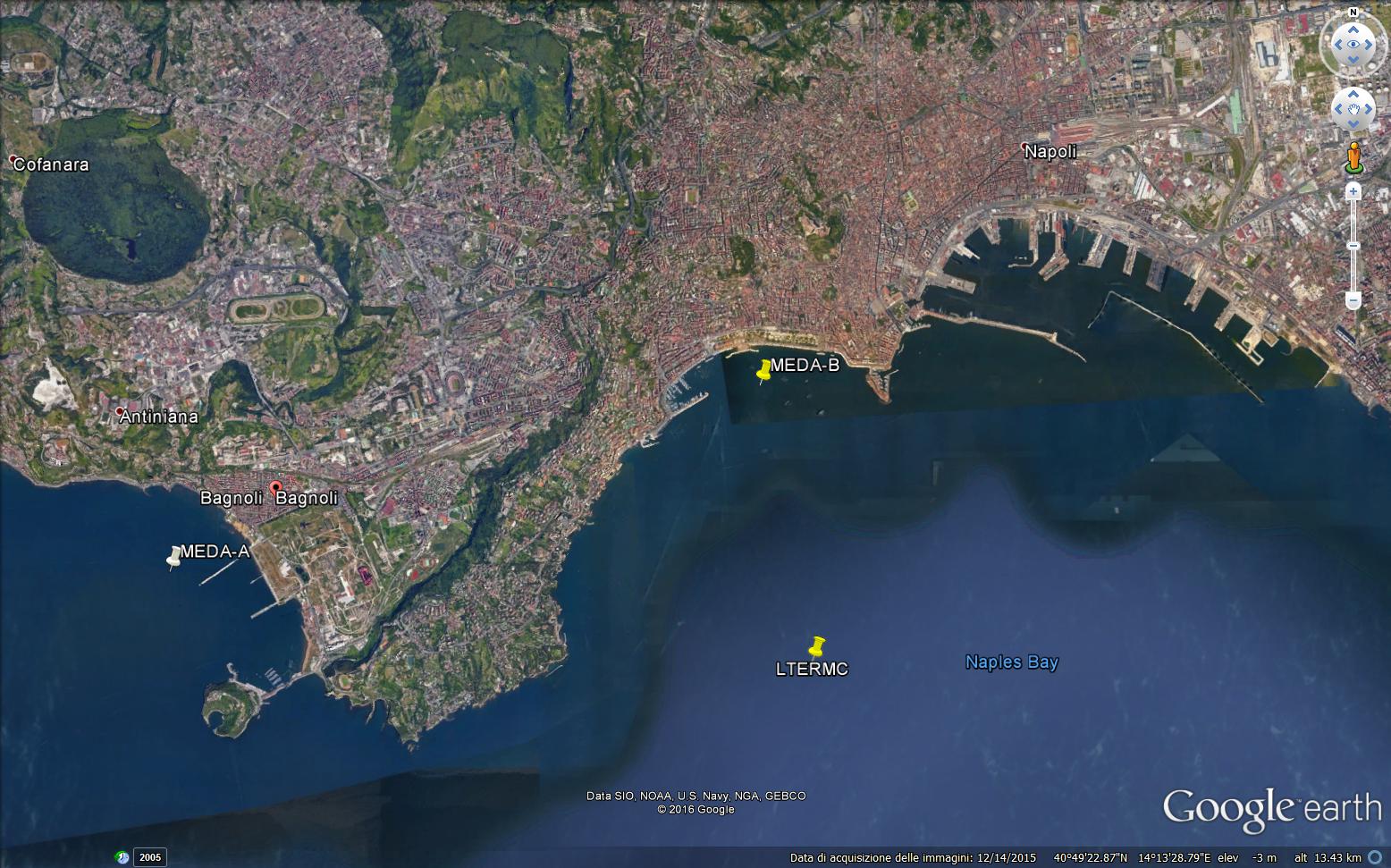 |
Continuous monitoring system along the Gulf of Naples coast |
Coastal vessels management |
|
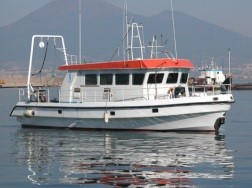 |
The MEDA unit manages two coastal vessels (M/B Vettoria and M/B Hippocampus), used for environmental monitoring, research and teaching. Moreover, it provides support for their use |
Hydrographic surveys and sampling |
|
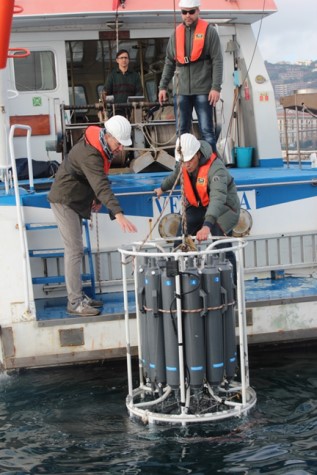 |
Continuous acquisition by means of multi-parametric probes and/or profilers. Collection and pre-treatment on board of samples for the main chemical and biological analyses |
Material collection and scuba diving |
|
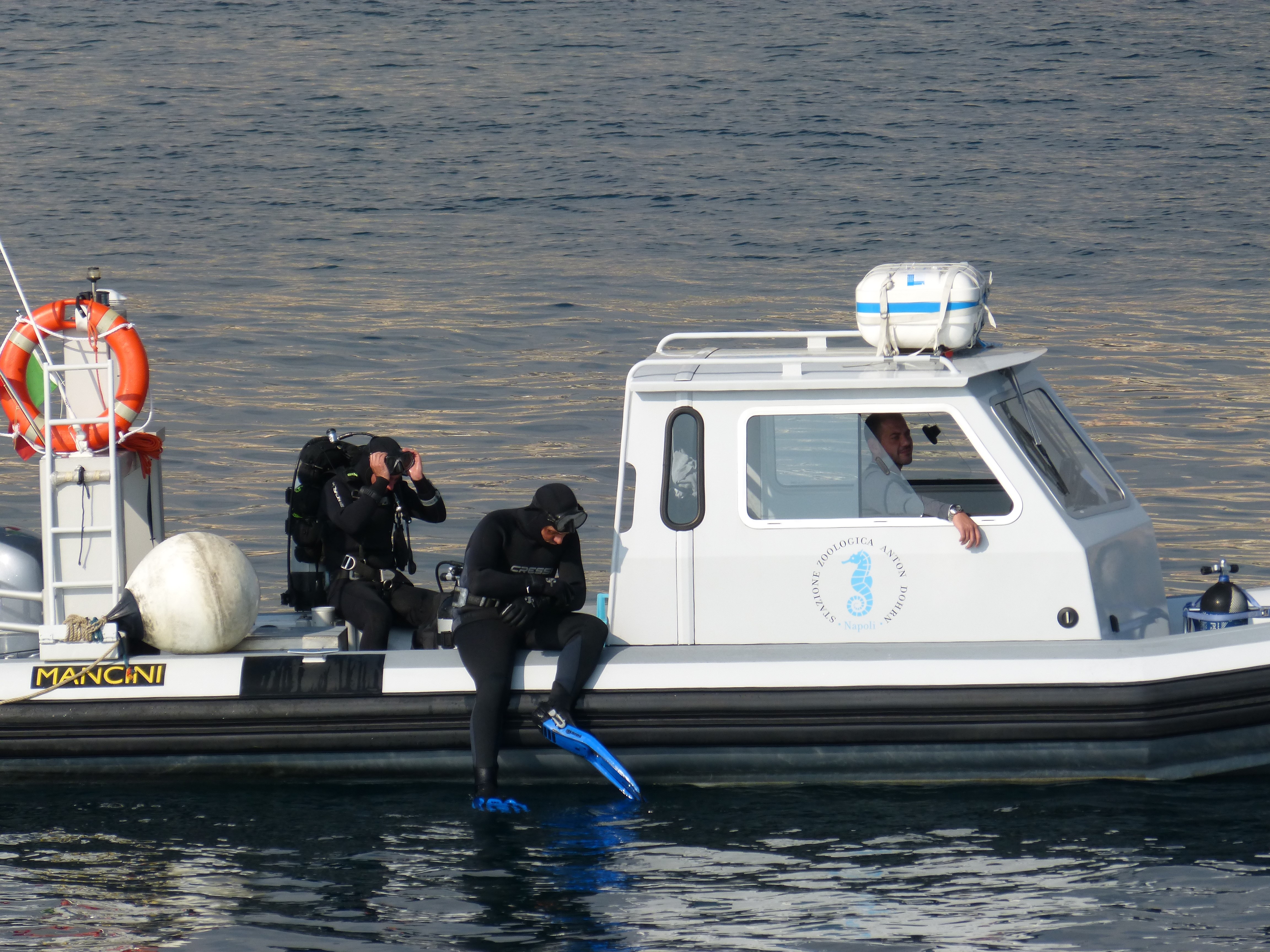 |
The unit deals with the collection of material to be used for both research and outreach activities Moreover, it carries out scuba diving activities |
Monitoring and environmental consulting |
|
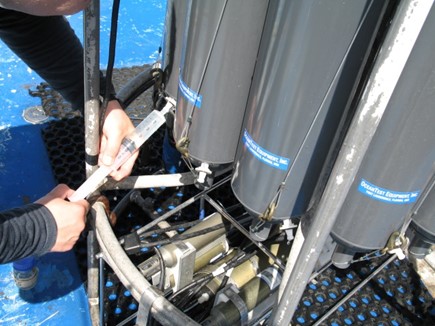 |
Sampling, environmental analysis, data elaboration and drafting of technical and scientific reports, in the context of different types of environmental monitoring commissioned by local and national institutions or private entities |
Instrumentation
Agilent Bioanalyzer 2100 – Agilent Technologies
|
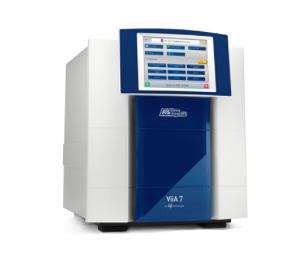 |
Applied Biosystems ViiA7 384 wells format - Life Technologies
|
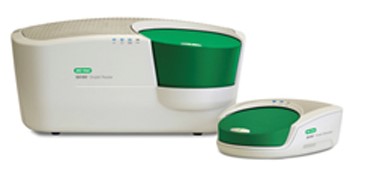 |
QX200 Droplet Digital PCR System. QX200 Droplet Reader (sx), QX200 Droplet Generator (dx) |
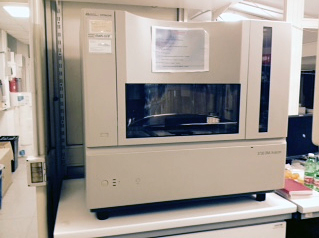 |
Applied Biosystems 3730 DNA Analyzer 48 capillaries - Life Technologies |
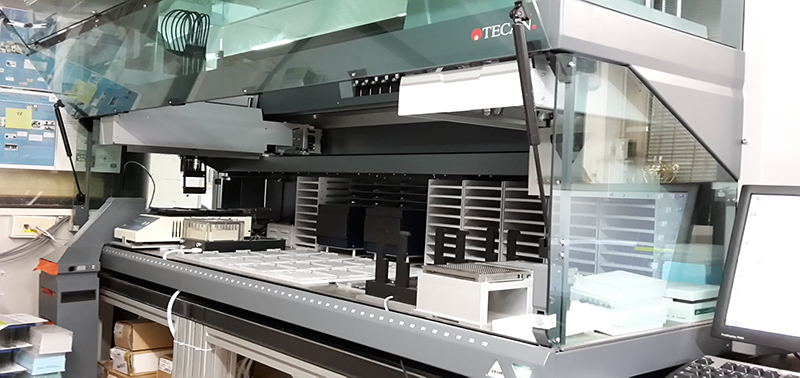 |
HTS platform FREEDOM EVO 200 - TECAN
|
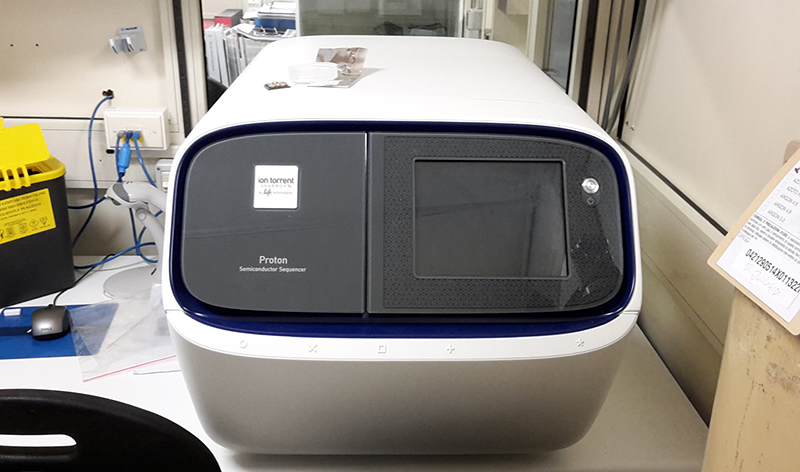 |
ION Proton semiconductor sequencer- Life Technologies
|
Services
Basic Services for Molecular Biology
Preparation and distribution of media and plates for bacteriology, of media for animal cell culture, of several products and reagents for Molecular Biology and ISH, of competent cells for bacterial transformation etc. Provisioning of synthetic oligonucleotides.
Qualitative control of nucleic acids
Qualitative and quantitative analysis of nucleic acids and definition of the reference standard for the QC of the RNA samples by microfluidic chip.
Real Time qPCR
Real Time qPCR mainly used for analysis of gene expression. Support to users includes assistance with experimental design, running of samples, and if requested, initial data analysis.
Droplet Digital PCR (in progress)
The ddPCR allows to:
Detect small amounts of target DNA molecules, with high sensitivity.
Determine the change in the number of genomic copies with high accuracy.
Measure gene expression levels with high precision.
Quantify NGS libraries.
DNA Sequencing service
Automated DNA sequencing by capillary electrophoresis essential for the study of nucleic acids from plasmids, PCR fragments , phage , etc.
Genotyping service
Used for genetic population studies by analysis of::
- Microsatelliti (single-locus).
- Snips, (single-locus).
- AFLP, (multi-locus).
Automation and High Throughput Screening (HTS) projects
Realization in automation, by Robotics (liquid handler), of a high-throughput projects for those research activities that require, in the short term, the analysis of a large number of samples.
Next Generation Sequencing service (NGS) (in progress)
Next generation sequencing (NGS) using "ION Proton" (Life Technologies) can produce data for transcriptomic studies, metagenomics, gene expression analysis, and targeted Resequencing.
Publications
2017
Matiddi M., Hochsheid S., Camedda A., Baini M., Cocumelli C, Serena F., Tomassetti P., Travaglini A., Marra S., Campani T., Scholl F., Mancusi C., Amato E., Briguglio P., Maffucci F., Fossi M.C., Bentivegna F., de Lucia G.A. (2017). Loggerhead sea turtles (Caretta caretta): A target species for monitoring litter ingested by marine organisms in the Mediterranean Sea. Environmental Pollution, 230: 199-209.
Santoro M., Di Nocera F., Iaccarino D., Lawton S. P., Cerrone A., Degli Uberti B., D'Amore M., Affuso A., Hochscheid S., Maffucci F., Galiero G. (2017) Pathology and molecular analysis of Hapalotrema mistroides (Digenea: Spirorchiidae) infecting a Mediterranean loggerhead turtle Caretta caretta. Diseases of Aquatic Organisms 124(2), 101-108.
2016
Kaara S., F. Maffucci, J. Imed, M.A. Bologna, M. Borra, E. Biffali, M.N. Bradai, S. Hochscheid (2016). Connectivity and stock composition of loggerhead turtles foraging on the North African continental shelf (central Mediterranean): implications for conservation and management. Marine Ecology 37, 1103-111., doi: 10.1111/maec.12375.
Maffucci F., R. Corrado, L. Palatella, M. Borra, S. Marullo, S. Hochscheid*, G. Lacorata, D. Iudicone (2016). Seasonal heterogeneity of ocean warming: a mortality sink for ectotherm colonizers. 2016. Scientific Reports, 6, 23983. doi:10.1038/srep23983.
Rees, A. F., Alfaro-Shigueto, J., Barata, P. C. R., Bjorndal, K. A., Bolten, A. B., Bourjea, J., Broderick, A. C., Campbell, L. M., Cardona, L. Carreras, C., Casale, P., Ceriani, S. A., Dutton, P. H., Eguchi, T., Formia, A., Fuentes, M. M. P. B., Fuller, W. J., Girondot, M., Godfrey, M. H., Hamann, M., Hart, K. M., Hays, G. C., Hochscheid, S., Kaska, Y., Jensen, M. P., Mangel, J. C., Mortimer, J. A., Naro-Maciel, E., Ng, C.K.Y., Nichols, W. J., Phillott, A. D., Reina, R. D., Revuelta, O., Schofield, G., Seminoff, J. A., Shanker, K., Tomás, J., van de Merwe, J. P., Van Houtan, K. S., Vander Zanden, H. B., Wallace, B. P., Wedemeyer-Strombel, K. R., Work, T. M. and Godley, B. J. (2016) Review: Are we working towards global research priorities for management and conservation of sea turtles? Endangered Species Research 31, 337–382.
2014
Casale P., Freggi D., Maffucci F., Hochscheid S. (2014) Adult sex ratios of loggerhead sea turtles (Caretta caretta) in two Mediterranean foraging grounds. Scientia Marina 78, 2: 303-309
Clusa M., Carreras C., Pascual M., Gaughran S., Piovano S., Fernández G. Levy y., Tomás J., Raga J.A., Maffucci F., Hochscheid S., Aguilar A., Cardona L. (2014) Fine-scale distribution of juvenile Atlantic and Mediterranean loggerhead turtles (Caretta caretta) in the Mediterranean Sea. Marine Biology 161: 509-519.
Hochscheid S. (2014) Why we mind sea turtles’ underwater business: A review on the study of diving behavior. Journal of Experimental Marine Biology and Ecology, 450, 118-136.
2013
Cheng I.-J., F. Bentivegna, S. Hochscheid (2013) The behavioural choices of green turtles nesting at two environmentally different islands in Taiwan. Journal of Experimental Marine Biology and Ecology, 440, 141-148.
Hochscheid S., A. Travaglini, F. Maffucci, G. C. Hays, F. Bentivegna (2013) Since turtles cannot talk: what beak movement sensors can tell us about the feeding ecology of neritic loggerhead turtles, Caretta caretta. Marine Ecology, 34(3), 257-379.
Maffucci F., D’Angelo I., Hochscheid S., Ciampa M., De Martino G., Travaglini A., Treglia G., Bentivegna F. (2013) Sex ratio of juvenile loggerhead turtles in the Mediterranean sea: is it really 1:1? Marine Biology 160, 5: 1097-1107.
Maffucci F., G. Annona, P. de Girolamo, M. A. Bologna, L. Meomartino, A. Montesano, F. Bentivegna, S. Hochscheid (2013) Bone density in the loggerhead turtle: functional implications for stage specific aquatic habits. Journal of Zoology, 291(4), 243-248.
Rossi L., P. Luschi, P. Casale, S. Hochscheid, V. Angelini, C. Vallini, G. Insacco (2013) MSFD Supporting document on the methodology and data used for the definition of marine distribution of Caretta caretta based on satellite telemetry data. ISPRA 2013.
Maffucci F., Oliverio M., Garofalo L., Gaspari S., Ciofi C., DeLucia A., Casale P. (2013) MSFD Supporting document on the methodology and data used for the analysis of the genetic structure of Caretta caretta individuals present in the Italian marine subregions (criterion 1.3). ISPRA.
2012
Saied A, Maffucci F, Hochscheid S, Dryag S, Swayeb B, Borra M, Ouerghi A, Procaccini G, Bentivegna F (2012) Loggerhead turtles nesting in Libya: an important management unit for the Mediterranean stock. Marine Ecology Progress Series 450:207-218.
Basile F, Di Santi A, Ferretti L, Bentivegna F, Pica A (2012) Hematology of the Mediterranean population of sea turtle (Caretta caretta): comparison of blood values in wild and captive, juvenile and adult animals. Comparative Clinical Pathology 21, 6: 1401-1406.
Chaieb O, Elouaer A, Maffucci F, Karaa S, Bradai MN, et al. (2012) Population structure and dispersal patterns of loggerhead sea turtles Caretta caretta in Tunisian coastal waters, central Mediterranean. Endangered Species Research 18: 35-45.
2011
Bentivegna F, Ciampa M, Hochscheid S (2011) The presence of the green turtle, Chelonia mydas, in Italian coastal waters during the last two decades. Marine Turtle Newsletter, 131, 41-46.
Bello G, Travaglini A, Bentivegna F (2011) Histioteuthis bonnellii (Cephalopoda: Histioteuthidae): a new prey item of the leatherback turtle Dermochelys coriacea (Reptilia: Dermochelidae). Marine Biology Research, 7: 314-316.
2010
Bentivegna F., Rasotto M.B., De Lucia G.A., Secci E., Massaro G., Panzera S., Caputo C., Carlino P., Treglia G., Hochscheid S. (2010) Loggerhead turtle (Caretta caretta) nests at high latitudes in Italy: a call for vigilance in the Western Mediterranean. Chelonian Conservation and Biology, 9, 283-288.
Hochscheid S, Bentivegna F, Hamza A, Hays GC (2010) When surfacers do not dive: Multiple significance of extended surface times in marine turtles. Journal of Experimental Biology 213: 1328-1337.
Chaieb O, El Ouaer A, Maffucci F, Nejmeddine Bradai M, Bentivegna F, Said K, Chatti N (2010). Genetic survey of loggerhead turtle Caretta caretta nesting population in Tunisia. Marine Biodiversity Records, 3, e20 doi:10.1017/S175526721000014X.
Psomadakis PN, Bentivegna F, Giustino S, Travaglini A, Vacchi M (2010). Northward spread of tropical affinity fishes: Caranx crysos (Teleostei: Carangidae), a study case from the Mediterranean Sea. Italian Journal of Zoology, 78(1): 113–123, DOI: 10.1080/11250001003680933.
Santoro M, Badillo FJ, Mattiucci S, Nascetti G, Bentivegna F, Insacco G, Travaglini A, Paoletti M, Kinsella JM, Tomás J, Raga JA, Aznar FJ (2010) Helminth communities of loggerhead turtles (Caretta caretta) from Central and Western Mediterranean Sea: the importance of host’s ontogeny. Parasitology International, 59: 367–375.
2009
Marschang RE, Papp T, Ferretti L, Hochscheid S, Bentivegna F (2009) Detection and partial characterization of herpesvirus from Egyptian tortoises (Testudo kleinmanni) imported into Italy from Libya. Journal of Zoo and Wildlife Medicine, 40(1), 211-213.
Bentivegna F, Hochscheid S (2009) Satellite tracking of marine turtles in the Mediterranean – Current knowledge and conservation implications. A report prepared for the Regional Activity Centre for Specially Protected Areas, Tunis.
2008
Hochscheid S., F. Bentivegna, G.C. Hays (2008) Winter ecology and physiology of sea turtles. Ch 27 in Lovegrove, B.G. & McKechnie, A.E. (eds.) Hypometabolism in animals: hibernation, torpor and cryobiology. University of KwaZulu-Natal, Pietermaritzburg, South Africa.
Sénégas, J.-B., S. Hochscheid, J.-M. Groul, B. Lagarrigue, F. Bentivegna (2008) Discovery of the northernmost loggerhead turtle Caretta caretta nest. JMBA2 - Biodiversity Records, ref. No. 6269, DOI:10.1017/S1755267209000773
2007
Revelles M, Carreras C, Cardona L, Marco A, Bentivegna F, Castillo JJ, De Martino G, Mons JL, Smith MB, Rico C, Pascual M, Aguilar A (2007) Evidence for an asymmetrical size exchange of loggerhead sea turtles between the Mediterranean and the Atlantic through the Straits of Gibraltar. Journal of Experimental Marine Biology and Ecology 349:261-271.
Bentivegna F, Valentino F, Falco P, Zambianchi E, Hochscheid S (2007) The relationship between loggerhead turtle (Caretta caretta) movement patterns and Mediterranean currents. Marine Biology, 151:1605-1614.
Hochscheid S, Bentivegna F, Bradai MN, Hays GC (2007) Overwintering behaviour in sea turtles: dormancy is optional. Marine Ecology Progress Series 340:287-298.
Hochscheid S, McMahon CR, Maffucci F, Bradshaw CJA, Bentivegna F, Hays GC (2007) Allometric scaling of lung volume and its consequences for marine turtle diving performance. Comparative Biochemistry and Physiology Part A 148, 360-367.
Projects
The Unit MaRe leads various Research and Development projects aimed at devising innovative culture systems, to guarantee on one side the quality of organisms designed to the scientific research, on the other side the reduction of breeding and management costs, by using an intense automation and reduction of the necessity of human intervention. To this end, the coordinator of the Unit submitted various projects in the last years and some of them are now starting, being funded, also thanks to the cooperation of industrial partners. Among them a strategic importance characterizes the project ModRes (FLAGSHIP RESEARCH PROGRAM. New model organisms for the scientific research: culture, ecology, physiology and genomic characterization. January 2018-December 2018. Euro 33.000). Experimentation has already started in the frame of this project, to reach the completion of the productive cycle of the two classic model species used for research purposes at SZN, Paracentrotus lividus and Ciona intestinalis. Ideal breeding procedure have been set and settlement cues have been devised; we are now in a phase of transfer of the knowledge to industrial productive processes. In parallel, the project INTENSE (MISE. INtegrated operating devices for inTElligent eNvironmental Services. To be started in 2018, duration 36 months. Euro 1.036.000) is aimed at the definition of revolutionary intelligent systems based on Internet of Things (IoT) technologies. The IoTes to be realized in cooperation with private industrial partners and engineering competences will allow the ideation of intelligent cages to breed P. lividus in the field, intelligent panels to be deployed to host C. intestinalis in coastal areas of the Bay of Naples, as well as intelligent photobioreactors to produce microalgae. Preliminary results are forecasted by the end of this year, when we also estimate to complete the restructuration of new culture facilities at the SZN.
Instrumentation
Mesocosms and aquaria
Tanks are available in different sizes and volumes for the breeding and rearing of benthic organisms.
In addition, a mesocosm for the culture of seagrasses is available.
Thermostatic chambers
They permit keeping algal cultures, small zooplankton and larvae of model organism in controlled conditions of light, temperature, humidity and photoperiod.
Photobioreactors
The unit operates two photobioreactors for the biomass production of various phytoplankton species.
Basic laboratory instruments
Laboratory for water analyses equipped with basic instruments (spectrophotometer, multiparametric probes , data-loggers etc..) for monitoring of chemical and physic parameters in the tanks.
Services
Rearing of research model organisms
The unit takes care of short and long-term maintenance of Mediterranean model species, mainly sampled in the Gulf of Naples and used for the purposes of Scientific Research (various echinoderms, molluscs, tunicates, cnidarians, sponges), under controlled conditions. It also cures the maintenance in closed loop systems of non-autochthonous echinoderm species.
Breeding
The unit is developing effective systems for the breeding of the two most commonly used model species (Ciona intestinalis and Paracentrotus lividus) and various research projects are conducted aimed at the breeding of various species of Mediterranean invertebrates.
Laboratory services for research
Collection and supply of organs / tissues / gametes and preparation of batch cultures of embryos at different stages of development and larvae. The technicians of the unit actively cooperate with the SZN researchers to meet their experimental needs to their full potential. A mass production service and supply of phytoplankton crops is also available for the purposes of the scientific research.
New model species (“candidate models”)
Identification of new species of model animals (invertebrates and vertebrates) is ongoing.
The aim of these activities is the identification and the creation of a "bank" of phyto- and zoo-planktonic and benthic organisms to be used as models, as food for other organisms, etc.
Mesocosms and Facilities for Research in the Marine Environment
At the Mare Unit, technicians are frequently involved in the development of experimental set-ups specifically constructed according to the needs expressed by various research groups, in response to required formalities. For this purpose, automatic systems have been developed for trophic studies on molluscs and echinoderms, set-up were designed to simulate the effect of turbulence on the stratification of marine sediments, microcosms were realized for the management of echinoderms, molluscs, cephalochordates and sponges under controlled conditions. The set-ups are realized according to own original projects and they remain an intellectual property of the Unit, while the services rendered allow the SZN researchers to count on a continuous and due cooperation in support of their research. These activities will be improved in the next future, with the installation of new facilities that will include, among others, programmable automatic systems for the breeding of model organisms (SZN Patent).










